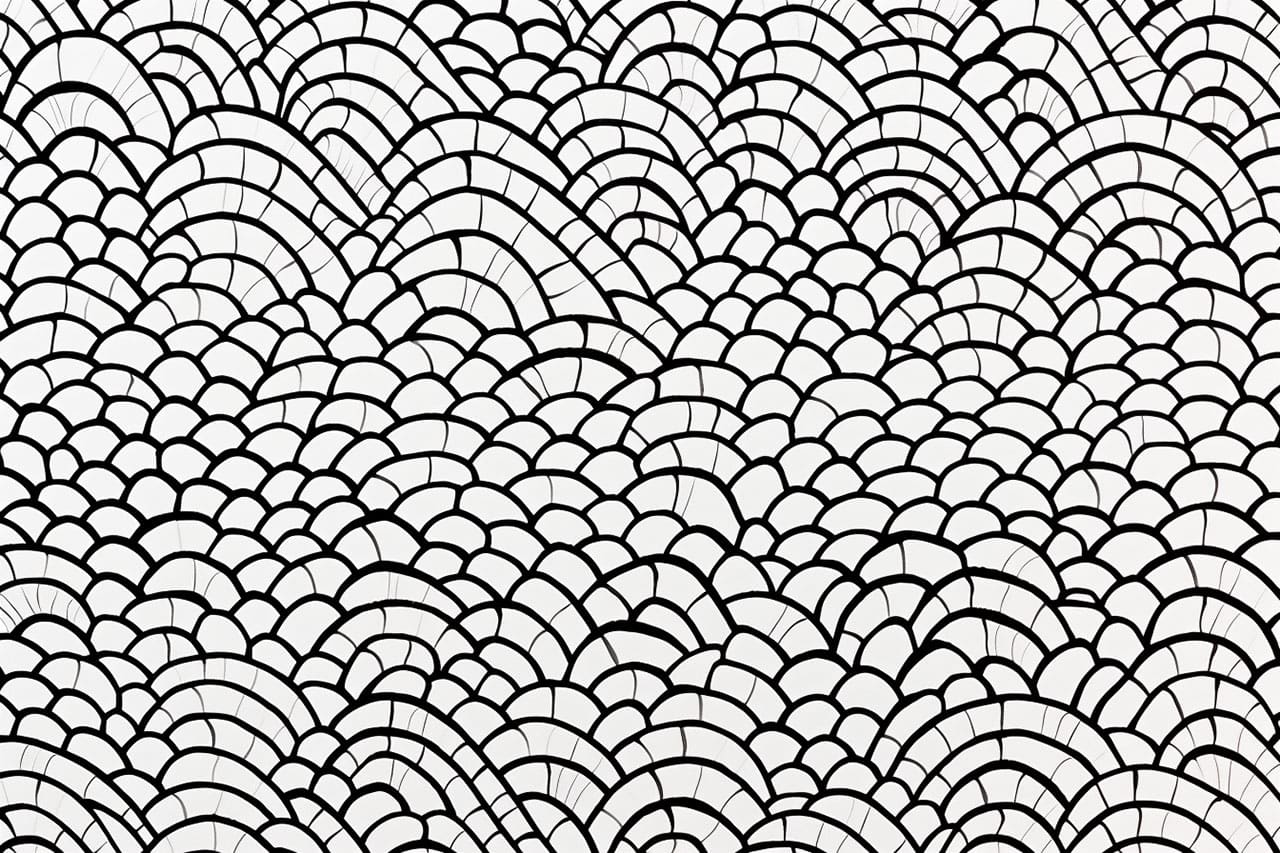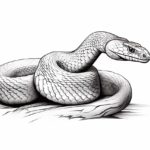
Welcome to this engaging step-by-step tutorial on how to draw snake scales! Snakes are truly captivating creatures, celebrated for their unique and intricate patterns. The delicate arrangement of their scales not only serves a protective function but also contributes to their mesmerizing beauty. As an artist, capturing these details can add remarkable depth and realism to your artwork, elevating it to new heights.
Whether you are a novice just beginning your artistic journey or a seasoned creator seeking to refine your skills, this guide is designed for you. We will provide you with clear, simple instructions at each stage of the process, ensuring that you feel confident and inspired. Drawing snake scales may seem challenging initially, but with practice and the right techniques, you’ll be amazed at what you can achieve.
So, grab your supplies and get ready to immerse yourself in the world of serpentine artistry. Let’s dive into the fascinating realm of snake scales and discover just how enjoyable and rewarding this creative endeavor can be!
Materials Required
Before we begin, gather the following materials:
Having these materials ready will ensure a smooth and enjoyable drawing experience. Now, let’s get started!
Step 1: Sketch the Snake’s Body
Begin by sketching the basic shape of the snake’s body using light pencil strokes. Think about the curvature and length you want for your snake. Don’t worry about making it perfect just yet; this step is all about establishing the overall form.
Step 2: Define the Scale Shape
Snake scales come in various shapes, but the most common are diamond-shaped or oval. Choose a shape that suits your snake and draw these scales along the entire length of the body. Keep in mind that scales closer to the head are usually larger, while those towards the tail become smaller.
Step 3: Add Texture to the Scales
To make the scales appear three-dimensional, add some texture by shading them. Start by lightly shading the outer edges of each scale, leaving the central part untouched. This will create the illusion of depth and give your snake a realistic look.
Step 4: Enhance the Contrast
To further enhance the contrast and make the scales stand out, darken the lines between them using a fine-tip pen or marker. Be careful not to make them too thick or overpowering; you want them to complement the overall drawing.
Step 5: Refine the Snake’s Features
Now that the scales are complete, focus on refining the snake’s head, eyes, and any other features you wish to include. Pay attention to the intricacies of the snake’s facial structure and capture its unique characteristics.
Step 6: Optional – Add Color
If you want to add color to your drawing, this is the perfect time to do so. Use colored pencils or markers to bring your snake to life. Remember to choose colors that match the species of snake you’re drawing or let your imagination run wild with vibrant and creative color schemes.
Step 7: Final Touches
Take a step back and evaluate your artwork. Are there any areas that need refinement or additional details? Make any necessary adjustments and add any final touches to complete your drawing.
Tip: To achieve realistic snake scales, focus on the layering technique using a combination of varied pencil grades. Start with a soft pencil (like a 2B) to outline the scale shapes lightly, ensuring they follow the natural curves of the snake’s body. Then, switch to a harder pencil (such as an H) to add fine details and texture within each scale, creating depth by varying the pressure. For added dimension, use a blending stump or your finger to softly smudge the edges of the scales, mimicking the smooth transitions found in nature. Finally, don’t forget to observe real snake photos or specimens to study the color and lighting nuances, which will help you enhance the lifelike quality of your drawing. Keep practicing, and enjoy the process!
Conclusion
Drawing snake scales may seem daunting at first, but with the right techniques and practice, you’ll soon find yourself creating beautiful and realistic snake drawings. Remember to be patient with yourself and enjoy the process. Drawing scales requires attention to detail, but it can also be a meditative and rewarding experience.
We hope this step-by-step guide has provided you with the knowledge and confidence to draw snake scales with ease. By following these instructions and exploring your creativity, you’ll be able to capture the intricate beauty of snakes in your artwork. So, grab your pencils, unleash your imagination, and start drawing those amazing snake scales!
Fun Facts About Snake Scales
- Snake scales are made of keratin, the same protein that forms human hair and nails.
- The scales act as armor, offering protection and aiding in movement by reducing friction.
- Scales are live tissue, and snakes shed them regularly in a process called ecdysis to accommodate growth and remove parasites.
- There are different types of scales on a snake’s body, with some designed for gripping, others for defensive purposes, and some just for camouflage.
- Some snakes have keeled scales, giving them a rough texture, while others have smooth scales for a sleek appearance.
- The iridescence in some snake scales is due to microscopic structures that reflect light, often seen in species like the rainbow boa.
- Each snake species has a unique scale pattern that can be used for identification, much like fingerprints in humans.
- Pit vipers have specialized heat-sensing pits located between their scales, allowing them to detect the body heat of their prey.
- Desert snakes have granular scales that help them move effortlessly across sandy terrains without sinking.
- Snake scales can provide insight into environmental changes; by studying scales, scientists can learn about pollution levels and habitat conditions.
Suggestions for Scenes and Settings for Snake Scale Drawings
- Jungle Canopy Viper: Create a detailed drawing of a viper in a lush rainforest, showcasing its patterned scales as it blends with the dappled light filtering through foliage.
- Desert Rattler Camouflage: Depict a rattlesnake partially buried in sandy dunes, its scales perfectly mimicking the dry landscape beneath the hot sun.
- Scale Study Close-Up: Illustrate a zoomed-in, intricate pattern of overlapping scales to highlight texture and variety in colors and shapes.
- Snakes Under Water: Design an underwater scene with sea snakes gliding effortlessly through coral reefs, their scales reflecting vibrant ocean hues.
- Northern Forest Boa: Show a snake in a dense, misty forest with moss-covered branches and dew drops glistening on its glossy scales.
- Urban Jungle Encounter: Picture a snake coiled in an unexpected city setting, such as a garden next to a brick wall, highlighting the juxtaposition of natural patterns and urban structures.
- Mythical Serpent Dragon: Imagine a fantastical creature emerging from a cave, with scales glimmering like jewels in the dark.
- Ancient Ruins Explorer: Draw a scene of a snake slithering through ancient ruins, its scales echoing the textures of weathered stones and carvings.
- Scale Transition: Capture the gradient changes in scale patterns and colors from a snake’s head to tail in a continuous panorama flowing through diverse surroundings.
- Scale Kaleidoscope: Create an abstract piece focused solely on snake scales, arranging them in a mesmerizing kaleidoscope formation characteristic of a surreal dreamscape.









